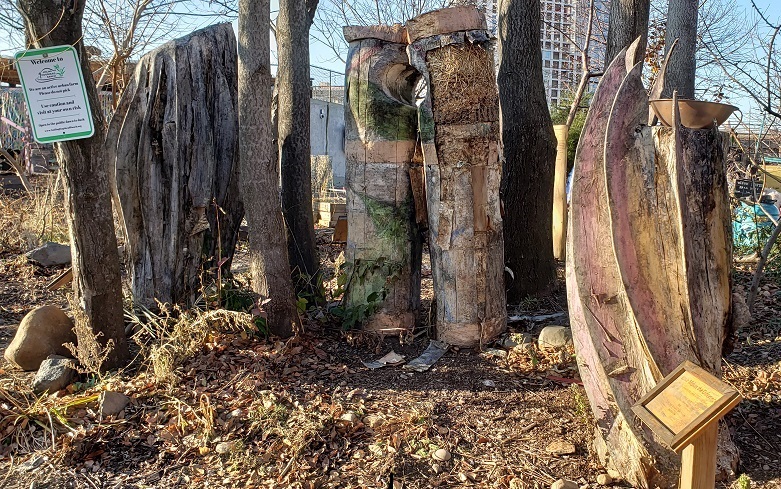LIC, New York ◦ 2018-2019
Myco-Rise
An Edible Mushroom Sculpture Experiment
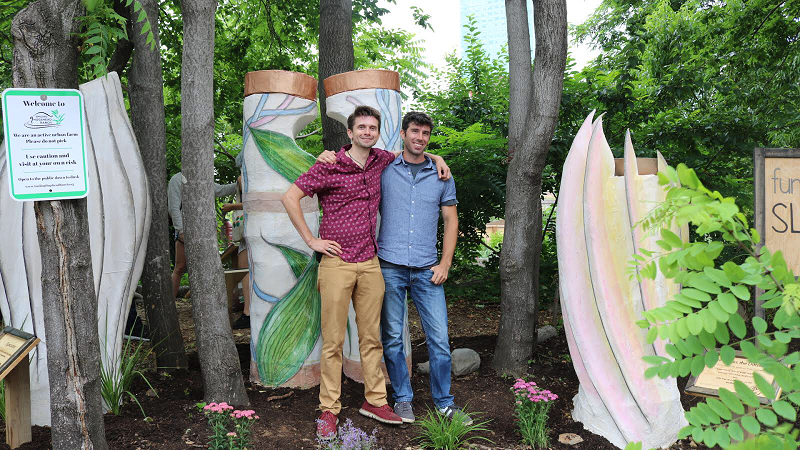
Concept

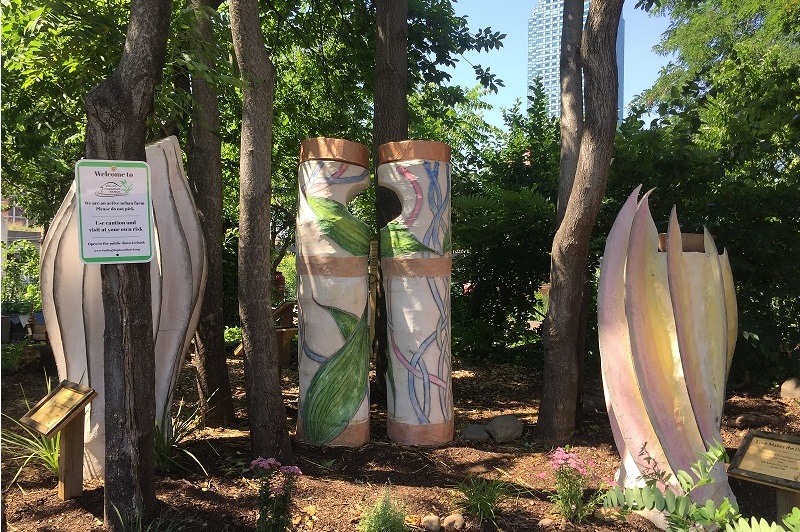
Myco-Rise: Art as Citizen Science
The Myco-Rise sculptures used a traditional “totem” method of gourmet mushroom growing that layers hardwood disks with mushroom spawn. This method is a lengthy process that can take up to a year from inoculation to harvest, so mushroom farmers typically cannot risk experimentation that might reduce or fail to produce yields. Myco-Rise was a unique opportunity for the artistic community to take that risk, with the potential for introducing new production methods and establishing a role for art in science-based agricultural experimentation.
Experiment One
Hypothesis: A biodegradable papier-mâché skin for the totems will offer the same protective characteristics as the industry standard of using polyethylene bags.
Testing: All four sculptures had fully biodegradable skins using a simple papier-mâché (flour, water, and paper products). As a control for the experiment, a fifth totem was not sculpted, but was just protected using the standard method of a polyethylene bag.
Measurement: The sculptures and the control were monitored to determine the durability of papier-mâché as an artistic medium in agricultural settings, the ability of different mushroom species to consume and biodegrade the skin, and the impact on harvests in comparison to standard practices.
Results: The papier-mâché skin proved much more durable than anticipated. The exoskeleton did not begin to biodegrade until September 2018, more than 3 months after the initial installation. The sculptures exhibited superficial molds on their surfaces that could be washed away with soap and water. The strong integrity of the papier-mâché also had the unexpected effect of increasing carbon dioxide levels within the sculpture, resulting in the first mushroom flushes appearing from the ground at the base of the sculptures. The skins of all sculptures were scored in November 2018 to vent the carbon dioxide.
Experiment Two
Hypothesis: Shorter disks will fruit earlier than taller disks.
Testing: Commercial growers typically use 12” hardwood disks, but it is hypothesized that mushroom spawn will “run” through shorter disks more quickly, accelerating the production cycle. All four sculptures had different disk sections consisting of 12”, 6”, and 3” cuts, as well as a cavity packed with mushroom spawn and sawdust.
Measurement: Sections of each sculpture were individually monitored for evidence of mycelium running and fruiting, to determine if shorter disks achieve earlier yields.
Results: Sculptures inoculated with yellow oyster mushroom bloomed throughout fall and winter of 2018 and 2019 (with flushes beginning in October and ending as late as January). The PoHu mushroom tower bloomed twice in December 2018 and December 2019. The lion’s mane tower did not fruit. Initial blooms were concentrated at the base of the sculpture due to high carbon dioxide levels inside the totems (due to the papier-mâché skin, as noted above). After scoring the skins, mushrooms primarily appeared throughout the first 2 feet of the sculpture (at the intersections of the thickest discs).
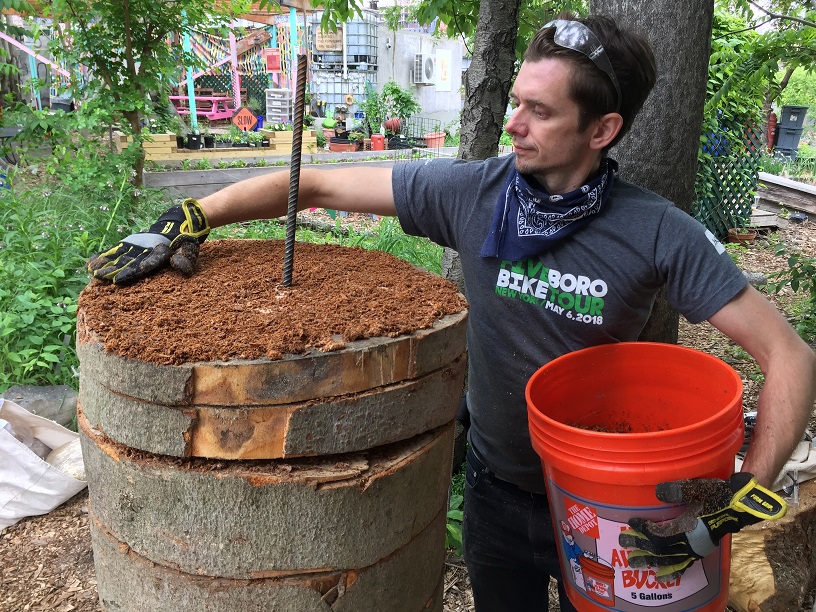

Project Partnerships

Smiling Hogshead Ranch
An urban farm collective whose mission is to create a culture that empowers and connects our communities through ecology, education and collaboration. Smiling Hogshead Ranch hosted this project within their Long Island City community farm.

Hour Children
A NYC-based non-profit seeking to break the cycle of intergenerational incarceration by helping incarcerated and formerly incarcerated women and their children successfully rejoin the community, reunify with their families, and build healthy, independent, and secure lives. Youth artists from Hour Children’s Teen Scene participated in the design and build for some of the sculptures.

Burning Man Arts
The Burning Man movement supports community-driven, inclusive, and interactive art as a vital component for a thriving culture. The Myco-Rise sculptural experiment was one of twenty-one international recipients of the 2018 Burning Man Global Arts Grant, funding the project’s installation.

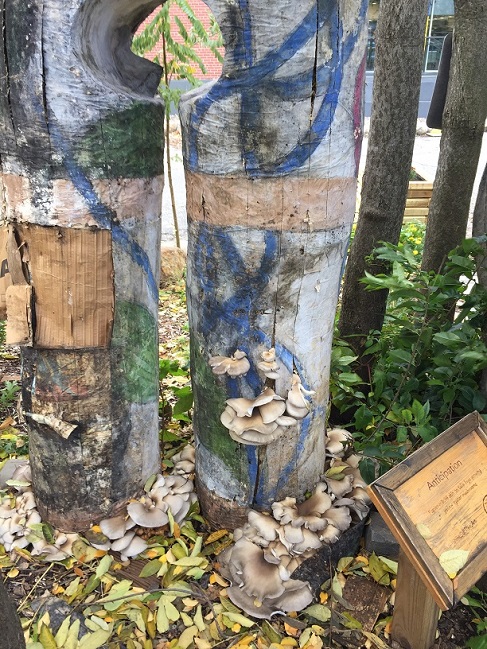
Future of the Project
The Myco-Rise installation period and formal experiment monitoring ended in June 2019, and a Fungi Festival celebration concluded the exhibition with a gathering that united many of the artists, gardeners, and mushroom fans that had been involved with or following the project. Smiling Hogshead Ranch has kept the mushroom towers active as ongoing productive totems, so you are still be able to visit the ranch to watch their gradual biodegradation process!
Salt Tree Art is excited to continue experimenting with this sculptural technique, and has also been introducing the technique to artists, farmers, and researchers for replication!
